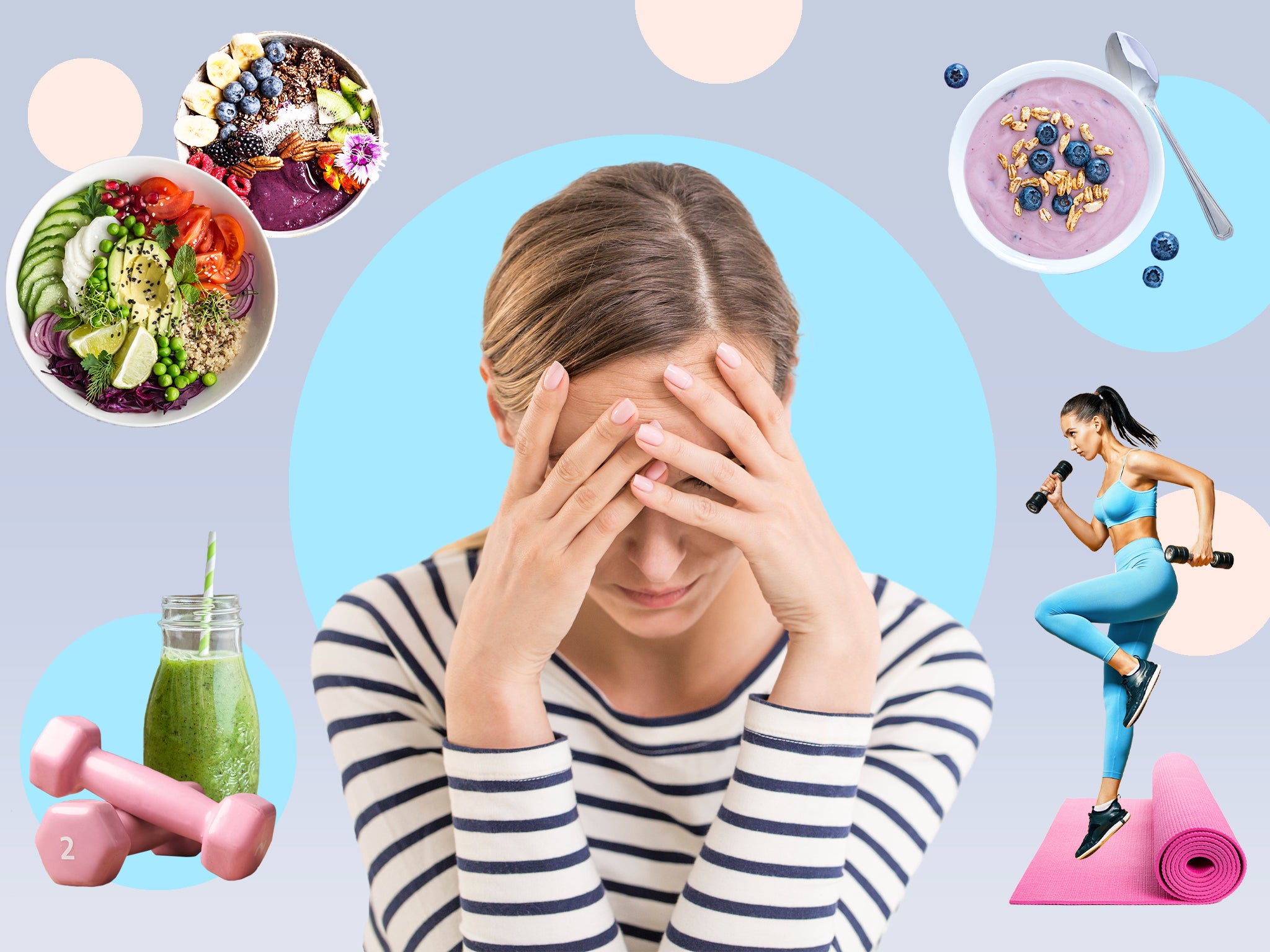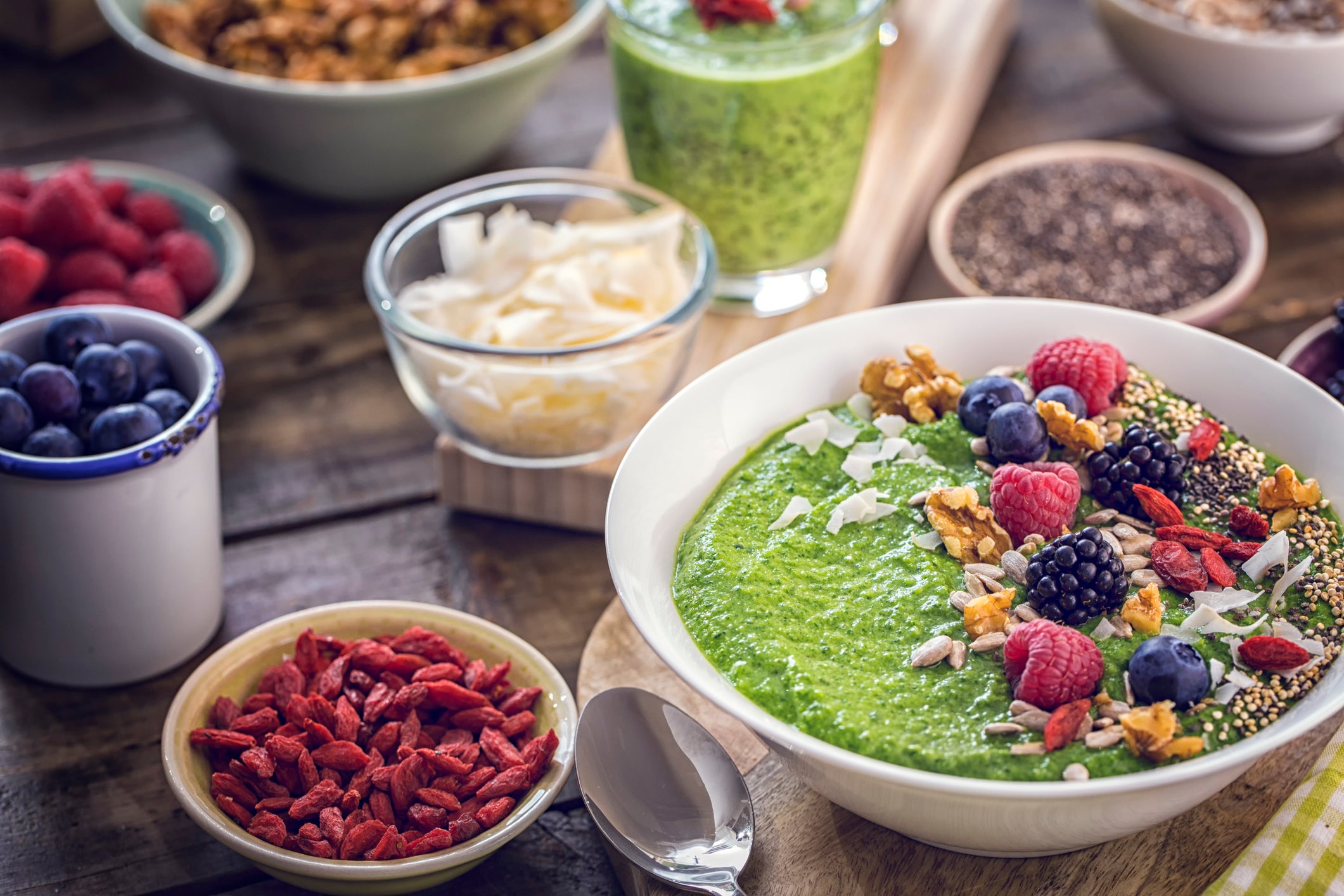Superfoods, supplements and a serious overdraft: How I learnt to turn off the wellness noise
As a new year marks a resurgence in the pursuit of wellness, Olivia Petter explains how she managed to distance herself from an industry that relies on restriction and obsessiveness


Nothing screams superiority quite like bringing your own food to someone’s house for dinner. It’s rude, antisocial, and downright strange. And yet, despite me knowing all this, it was something I used to do regularly. Aubergine curry squashed into a tiny Tupperware container? Yep. Precooked quinoa and my own personal “glow bowl”? Why not? Leftover “detox salad” from the night before? Go on then.
It wasn’t that I was following a particular diet, or that I was a really picky eater. And I certainly wasn’t looking for a way to show off my cooking skills, of which I have none. It was much simpler than that. I just wanted to be “well”, even if I didn’t know exactly what that meant. Nonetheless, I was desperately seeking a body entirely free from “toxins” – one that would radiate goodness in all its forms. And so my friends’ chilli con carnes and lasagnes were firmly struck off the menu. This was wellness, and I was obsessed.
Let’s go back a little. Like many women I know, I’ve always been conscious of the way I look – and, crucially, how my lifestyle affects that. But things escalated when I turned 21 at the apex of what is often referred to as the “clean-eating movement”.
Back then, it felt like everyone I knew and their families had been seduced by the promise of this new-age way of living that, according to countless social media influencers and self-appointed wellness gurus, would propel us into the upper echelons of what life had to offer. We were told it would make our skin more dewy, our muscles more defined, our stomachs less bloated. Some even promised us it could cure serious illnesses.
As a young woman fresh out of university, with a generous overdraft limit and several body hang-ups, I was an easy target. And so I ate the “whole” and “unprocessed” foods. I demonised gluten, dairy, and just about everything else that wasn’t green. I even spiralised courgettes, for goodness’ sake.
I plodded along for a while in this blissful (and deeply smug) state before I realised it wasn’t enough. My skin wasn’t glowing, I hadn’t noticed any difference in my body, and I didn’t feel any healthier than I had before. So I took things further.
We were told wellness would make our skin more dewy, our muscles more defined, our stomachs less bloated
Within a few days, I was well into my overdraft as a result of the numerous “superfoods” I had purchased: green juices, chia seeds, maca, spirulina, baobab, cacao butter... I bought it all, even though I didn’t know what to do with most of it. I stopped drinking coffee, and instead started my day with a hot-water concoction comprising lemon, cayenne pepper, turmeric and ginger, which I told myself was delicious (it was not).
I said no to dinners out, unless I could find something “clean” on the menu, and I increasingly ostracised myself from social occasions involving food. I even started an Instagram account to document my meals (I know, I know).
I took it beyond food, too, delving deeper into my overdraft to sign up to Bikram yoga, barre, and spinning. On top of that, I started doing daily Pilates workouts on YouTube; I actually hurt my back once from doing a move incorrectly. On top of this, I followed hundreds of health and fitness influencers, eagerly taking screenshots of their recipes and routinely watching their YouTube videos to learn what they ate in a day, and how they exercised. Wellness soon became the only thing I could talk or think about; it consumed me.

It wasn’t until I started hearing the term “orthorexia” that I realised I might have a problem. Although the condition is not formally recognised in the Diagnostic and Statistical Manual, orthorexia is now commonly acknowledged as an eating disorder. The National Eating Disorders Association describes it as “an obsession with proper or ‘healthful’ eating”. And everything I read about it perfectly illustrated how I was living at the time.
That was a wake-up call, but it would take years for me to move away from wellness completely. The first thing I did was unfollow all the health and fitness influencers whose accounts I had become beholden to. I weaned myself off YouTube, too, and started spending less time on social media altogether. That helped enormously. Without the constant reminders of how “well” everyone else was, I found it much easier to distinguish between what I’d been brainwashed to think would make me feel good and what actually did.
Then, after dabbling in veganism – a lot of the influencers I followed were plant-based – I decided to start reintroducing animal products back into my diet, and was pleasantly surprised when I found it gave me more energy. It also made it much easier when I went on holidays with friends, or round to their homes. Soon, I found I was able to enjoy dining out again, ordering the foods I craved instead of depriving myself time and time again.
Without the constant reminders of how ‘well’ everyone else was, I found it much easier to distinguish between what I’d been brainwashed to think would make me feel good and what actually did
As for my relationship with exercise, which was also bordering on obsessive, I tried to reframe my mindset, seeing it as something I did primarily for my mind rather than my body.
None of this was easy, nor did it happen quickly. And of course, I still have moments when I struggle to stop myself from being sucked back in. Particularly around this time of year, when it feels like everyone around me has embarked on some sort of post-Christmas cleanse, diet, or detox, hellbent on undoing the “damage” of an indulgent festive season.
It doesn’t help that we’re encouraged to do it, too, with an annual uptick in weight-loss articles and body transformation posts on social media every January. That, paired with a society that celebrates unrealistic beauty standards and places so much value on women for the way they look, means it’s no wonder so many of my female friends started 2022 by embarking on restrictive regimes. We might have moved away from “clean eating”, so to speak, but the obsessive lifestyle it celebrated still exists today. It’s just sold to us in more tacit ways, like a #strongnotskinny hashtag, which, of course, makes it all the more insidious.
My current relationship with food and exercise is still far from perfect, but it no longer takes up the space in my mind that it once did. And I can see wellness for what it is: an elitist industry fuelled by pseudoscience. One that is not at all synonymous with health, but possibly even diametrically opposed to it. At least, it was in my case.
For anyone struggling with the issues raised in this article, eating disorder charity Beat’s helpline is available 365 days a year on 0808 801 0677.
NCFED offers information, resources and counselling for those suffering from eating disorders, as well as their support networks. Visit eating-disorders.org.uk or call 0845 838 2040.
Join our commenting forum
Join thought-provoking conversations, follow other Independent readers and see their replies
Comments
Bookmark popover
Removed from bookmarks